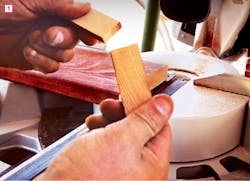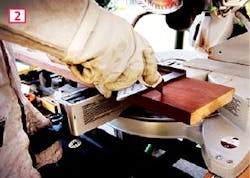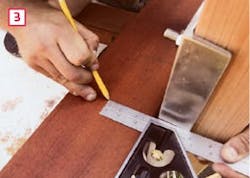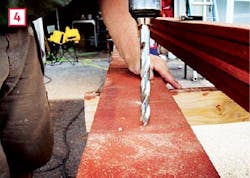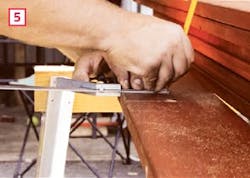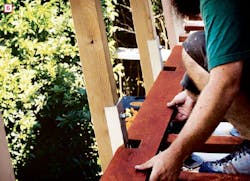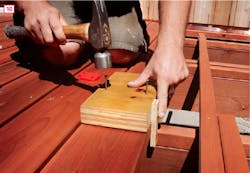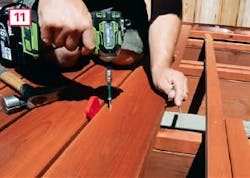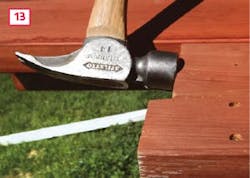Good-looking details don’t happen by accident. They are inspired by necessity and developed out of experience, and they endure because of careful planning and execution. ProTradeCraft.com visited a Built to Last Design & Build jobsite in New Milford, Conn., to watch how builders and remodelers Ben Bogie and Ryan Olivieri go about laying decking.
Measuring, Marking, and Cutting
Mark boards with a knife. After clipping off the split, Olivieri flips the board around and pulls his tape from the freshly cut square end. He marks the length with a utility knife, then holds the point of the knife at the mark and slides his square up against it [2]. This is faster and more accurate than trying to align the square with the mark first. He scores the cut line once or twice to create a crisp, visible line, which also reduces tear-out during the cut.
Nibble the cut line. Whether or not your saw has a blade alignment laser, you can ensure accuracy by working your way to the cut line with a series of small cuts or “nibbles.” After making the cut, seal the deal by soaking the end grain with stain to keep it from wicking moisture.
Neat, Well-Drained Notches
Bogie set his combination square to the depth of the notch and marked the edges of the post [3]. He wanted the notch to be about a ¼ inch bigger than the post dimension, with rounded corners. By using a ½-inch brad-point bit to drill a hole at the end of each line on the board, he automatically got the right spacing and created a rounded inside corner [4].
A dry fit shows that every notch perfectly aligns [6]. Once fastened into place [7], this board establishes the line for all of the other deck boards.
Pattern Recognition
With the fence removed and replaced with the pair of auxiliary legs that are normally stored on the sides, the jig can be used to mark screw locations at single or double joists [10].
Spaced Out
Start by butting a small 2x6 or 2x8 cutoff against the offending deck board and marking a line on the joist. Then rip the 2-by on a taper and fasten one half to the joist about an inch inside the line with the tapered edge on the side of the decking [13]. By tapping the other half of the ripped 2-by into the space between the block and the decking, you can persuade a bowed board into position.

